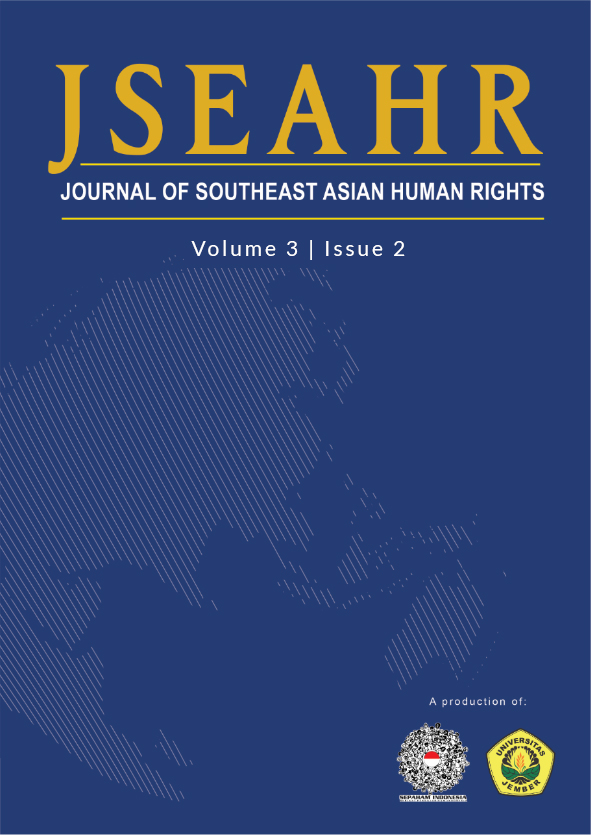The Long March in the New Era
Filling Implementation Gaps between Chinese Municipal Law and the International Human Rights Law on Non-Discrimination
DOI:
https://doi.org/10.19184/jseahr.v3i2.13465Keywords:
new era, non-discrimination, implementation gaps, multiple discrimination, legal protection of human rightsAbstract
China has entered a New Era with an aspiration to safeguard human rights through law. However, implementation gaps are found when comparing the current Chinese domestic laws on non-discrimination with the requirements set by international human rights treaties and international labour standards on eliminating discrimination in the labour market. This article illustrates how rural migrant workers are an underprivileged group in Chinese society, emphasising the inferior treatment they experience due to their agricultural hukou residential status in urban areas. The study identifies several implementation gaps between the international standards and the Chinese domestic legal system on non-discrimination, serving as the very first step to eradicate de facto and de jure discrimination and to achieve Legal Protection of Human Rights in the New Era.
Downloads
References
Christa Tobler, Indirect Discrimination, A case study into the Development of the Legal Concept of Indirect Discrimination under the EC Law (Antwerp, Oxford: Intersentia, 2005).
European Union Agency for Fundamental Rights, European Court of Human Rights, Handbook on European Non-Discrimination Law (Strasbourg: Council of Europe Publishing, 2011).
Jianfa Shen and Wei Xu, "Migration and Development in China: Introduction", (2016).
Jing Song, "Mobility and Life Chances in Urbanization and Migration in China: Introduction, (February 2018).
Lisa A. Crooms, “Indivisible Rights and Intersectional Identities or, What Do Women’s Human Rights Have to Do with the Race Convention?†(1997) 619:40 Howard Law Journal.
Pan Jiahua and Wei Houkai, Blue Book of Cities in China: Annual Report on Urban Development in China No.5, first edition (Beijing: Social Science Academic Press, 2012).
Pu Hao and Shuangshuang Tang, "Floating or Settling Down: Effect of Rural Landholdings on the Settlement
Intention of Rural Migrants in Urban China" (2015) 47 Environment and Planning.
Qin Xuan Peng, "No Country for the Low-end? −An Intersectional Analysis of the Status of Migrant Women Workers as Domestic Helpers and Relevant Laws in China", International Journal on Minority and Group Rights (2019).
Ronald C. Brown, “China’s Employment Discrimination Laws During Economic Transition†(2006) 19 Columbia Journal of Asian Law.
The Employment Discrimination in China, Current conditions and anti-Discrimination Strategies (Beijing: China Social Science Press, 2011).
Timo Makkonen, Multiple, Compound and Intersectional Discrimination: Bringing The Experiences of the Most Marginalized to the Fore, Institute for Human Rights (Turku: Ã…bo Akademi University Press, 2002).
Zhang Huafeng, “An Economic Analysis of Residence Requirements and Employment Discrimination,†in Li
Weiwei and Lisa Stearns, Employment Discrimination: International Standards and National Practice (Beijing: Law Press, 2006).
Zhang Yonghong, “Politics of Local Governance: A Systemic Perspective, Using the Implementation of Policies on the Protection of Rural Migrant Workers as an Example,†(2009)49:1 Journal of Sun Yat-sen University, Social Science Edition.







